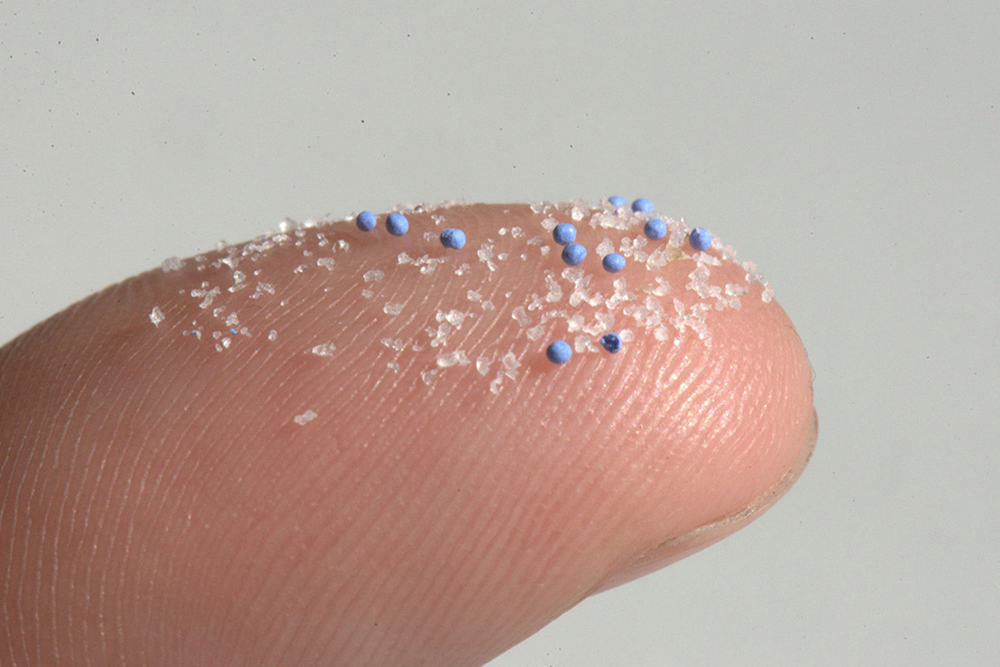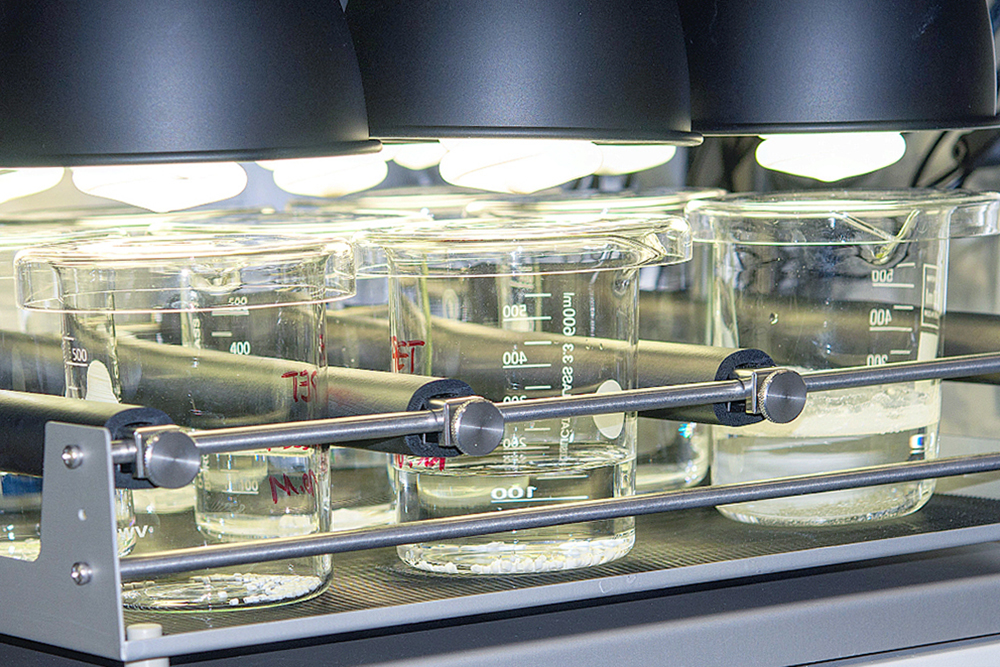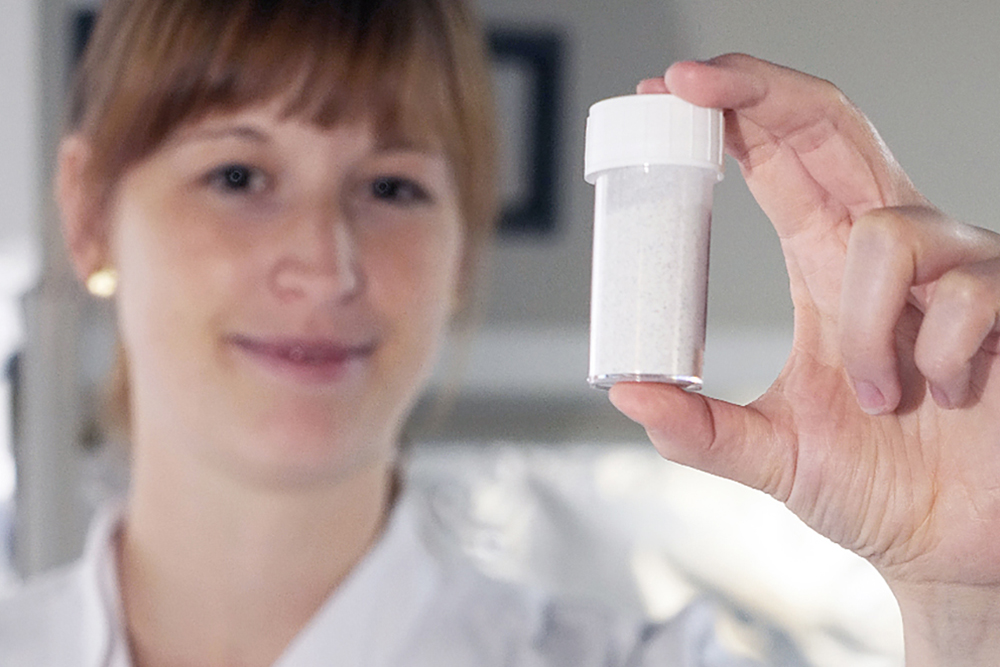Author: Fanny Ppohontsch | Translation: Anna Knollmann
Less plastic is more
Water covers two thirds of the earth's surface, making our earth the blue planet. Oceans and seas provide half of the oxygen we breathe and absorb one third of the carbon dioxide we produce. They control the climate, are economic and living space.
Habitat
It was only in early 2017 that a beaked whale stranded on the Norwegian coast - starved to death because 30 plastic bags, parts and packaging accumulated in its stomach. One of many examples that shows the dark side of our plastic consumption and the impact on the marine environment. Plastics are omnipresent in industry, commerce, and our homes. Through waste water, accidents, forces of nature and improper disposal, they end up in the sea - and ultimately in the food chain.
A garbage truck. Every minute
Every year, over 8 million tons of plastic are released into the oceans. This is equivalent to the load of a garbage truck that is sunk in the water every minute. According to a study by the World Economic Forum, a total of 180 million tons of plastic waste currently floats in the oceans, 70% of it on the bottom. In terms of weight, in thirty years it will be more plastic than fish. This is because plastic is biologically inert and does not degrade: The plastic bottle you drink from today takes 450 years to decompose. Under the influence of UV radiation, salt water and waves, it disintegrates into ever smaller plastic particles and becomes microplastic (MP).
What is microplastics?
51 trillion particles of microplastics have been found in the ocean to date - 500 times more than stars in our galaxy, the Milky Way. Microplastics includes all particles smaller than 5 millimeters. They are hardly visible to the naked eye and cannot be distinguished from grains of sand on the beach. A distinction is made between secondary MP, such as the decomposing bottle, which is subject to weathering and aging processes over centuries, and primary MP, i.e. industrially produced molded bodies, which are mostly used in cosmetics as abrasion particles or as raw materials in production. In addition to small beads in every third facial peeling produced in Germany, these also include tiny synthetic fibers which are released from fleece textiles with every wash cycle and cannot yet be filtered out in sewage treatment plants. "The wastewater treatment plants operated in Germany return purified wastewater of an appropriately good quality to the water cycle. Nevertheless, microplastics cannot be completely retained with the established processes. The particles are often so tiny that the human eye can no longer perceive them," reports Erik Schulze from the Environmental and Process Engineering Business Division. Ceramic filtration membranes could be an alternative: "They ensure high flows, retain even the smallest molecules and are stable over the long term. However, in order for the robust ceramic products to be able to provide economically efficient filtration of the enormous quantities of water every day, further investment in research is needed to reduce process costs," adds Christian Pflieger from the IKTS Application Center Membrane Technology in Schmalkalden. The MP reaches the environment via running water, where it is mistaken for food and eaten by animals - a poisonous menu. When it decomposes, it can release hormonally active additives such as plasticizers, for example. It also binds organic pollutants, such as pesticides, from the surrounding water in high concentrations. At the end of the food chain it ends up on our plates.
Fraunhofer IKTS supports WEATHER-MIC
Microplastics is a relatively new challenge for the environment - only in the last 60 years has plastic been produced in huge quantities worldwide. Accordingly, there are still no legal regulations regarding production, use and disposal. An initiative launched in 2016 consisting of four international collaborative projects under the umbrella of JPI Oceans is starting there. The aim is to develop uniform measuring methods and further knowledge about the transport and sedimentation behavior of MP, and how it affects the marine environment and ultimately human beings.
The laboratory for powder and suspension characterization, accredited at the Fraunhofer IKTS according to DIN EN ISO/EC 17025, is investigating what happens in the long term with microplastics in the marine environment as part of the WEATHER-MIC joint project.
Together with other partners from Germany, Sweden, Norway, and Belgium, the decomposition into smaller and smaller particles and which environmental factors mainly influence this process is being investigated. In order to understand the complex natural weathering processes and their influence on the material, Kathrin Oelschlägel analyses them under controlled laboratory conditions: "The work means a lot to me as a scientist, but also as a private person. I enjoy working in a field where there is still a lot to discover and understand. I hope that my work will help to clarify whether and to what extent microplastics pose a risk to the environment. In my everyday life, I have become much more aware of the plastics I use since the project began. My handling of plastic packaging, for example, has also changed significantly. I try to use alternatives in sensible places. Conscious use of plastics does not harm us in our everyday lives and is ultimately beneficial to our nature.
3 quick tips for everyone to reduce their own plastic footprint...
- Drink regional water from reusable glass bottles - or directly from the tap: tap water is the best controlled food in Germany.
- Avoid unnecessary (miniature) plastic packaging - fruit, for example, has a natural protective cover and loose coffee tastes much better than from a disposable capsule.
- Carry a long-lasting cloth bag with you when you go shopping and interrupt the disposable cycle - 71 plastic bags per capita are consumed in Germany every year, and the EU directive stipulates that by 2025 this figure should be a maximum of 40.
... and 1 tip for the German cosmetics industry
- Biowax instead of polyethylene (PE) and co.: In the USA, at least PE as an artificial additive in washable cosmetics will be banned from July 1, 2017. In the DACH countries, the principle of voluntariness still applies. Many companies have also committed themselves to this since 2014 - however, a current study has not recorded any positive results: The cosmetics industry continues to rely on universally applicable, cheap plastic. At the Fraunhofer IKTS, high-quality waxes are synthesized from biogas, which can substitute artificial additives in creams. The researchers have developed a technology that ensures the economic independence of the almost 8000 biogas plants in Germany even after the amendment of the German Renewable Energy Sources Act (EEG): Plant operators can now choose between energy production and the manufacture of sustainable products.
Stay informed: You are welcome to subscribe to our newsletter, read our other blog articles and follow us on LinkedIn, Instagram and YouTube.



